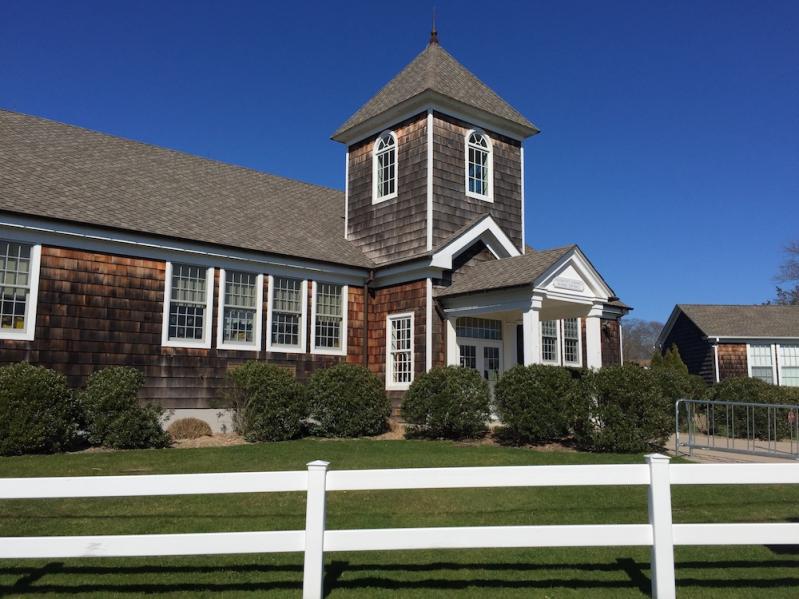With the hope that voters will see it as a good-faith gesture that turns some no votes into yeses, Wainscott School District officials have slightly trimmed their proposed 2023-24 budget ahead of a June 20 revote.
The difference? About $17,000, achieved by doing away with the entire line for new equipment in the original budget.
The new plan, totaling $6,144,331, “is effectively the contingency budget,” said David Eagan, president of the school board, by phone on Friday. “We’re not a larger district with after-school sports and activities and the things that usually get cut out of contingency situations. This is really an honest statement to the taxpayers that this is the least amount of money necessary to educate the students that we have.”
On May 16, Wainscott failed to achieve the supermajority of yes votes needed to override the state cap on tax-levy increases. The district had been asking for a 95-percent increase, well above the state limit. The tally was 91 yes, 65 no — just three votes shy of the 60-percent approval needed.
“We took out what we could, other than dismantling the schoolhouse, which we’re not interested in doing, and which wouldn’t be a cost savings anyhow,” Mr. Eagan said. “We know it’s a big ask and we understand that. We all live in the community and pay the tax bills, but it’s really what the situation dictates.”
Multiple factors complicated Wainscott’s budget this year. There was an unanticipated — and unprecedented — influx of 20 new students in grades four through 12, all of whom attend schools elsewhere than in Wainscott, which only goes from kindergarten through third grade. Wainscott must pay for tuition to the ongoing schools, which created a shortfall in the current budget. Not only did the district have to tap into its reserve fund to cover the difference; it also had to ask taxpayers for $1 million more to avoid being in the red.
The enrollment increase also meant that the extra tuition payments had to be worked into next year’s budget, lest the district incur a shortfall for a second year in a row.
What’s more, while most school districts in New York received a 3-percent increase in state funding for the coming year, Wainscott gets nothing from the state because of its small size. The district has appealed for help to Assemblyman Fred W. Thiele Jr., who has a track record of supporting individual school districts with one-off payments called “bullet aid” aimed at specific programs or initiatives. Bullet aid requires approval by the State Legislature; past recipients have included the Springs and East Quogue Districts in amounts such as $25,000 or $50,000. The amount Wainscott might receive is not yet set.
“I think they’re going to get some bullet aid this year, but it’s not a game-changer,” Mr. Thiele said Tuesday. “It’s not going to get them under the cap or change the tax rate very much. But we recognize they are going through some very difficult issues and every little bit helps.”
Wainscott’s school-tax rate is already among the lowest in the state, Mr. Thiele noted. The hamlet, along with its neighbor, Sagaponack Village, “probably have more property wealth than virtually any other district in the state, which is misleading, I think. It shows the value of the property, but it doesn’t reflect the school district’s needs. They certainly have a unique situation.”
A public hearing on Wainscott’s budget is to take place next Thursday at 6:30 p.m. in the schoolhouse. Voting hours on June 20 are from 2 to 8 p.m. at the schoolhouse, at the corner of Wainscott Main Street and Wainscott Hollow Road.
At the school board’s meeting last Thursday, there were just two community members in attendance. Melanie Hayward, who lost a bid last month for a seat on the board, in its first contested race in 12 years, was one of them. Of the $17,000 budget cut, she said, “I don’t think it’s really sufficient to meet the needs of a community that voted down the budget, but it demonstrates how tight the budget already is. I think there could have been some additional adjustments made.”
One suggestion would be for the district to take out the $10,000 line for public relations spending, she said. “It won’t go a huge way in cutting it down, but I don’t see that as an ordinary contingent expense.”
Ms. Hayward said she would also like to see the district do more outreach about the upcoming budget hearing. “It’s hard to find out that information unless you are looking for it,” she said. “Last time, the budget mailing didn’t reach homes until after the hearing, so it was difficult to know it was happening.”

